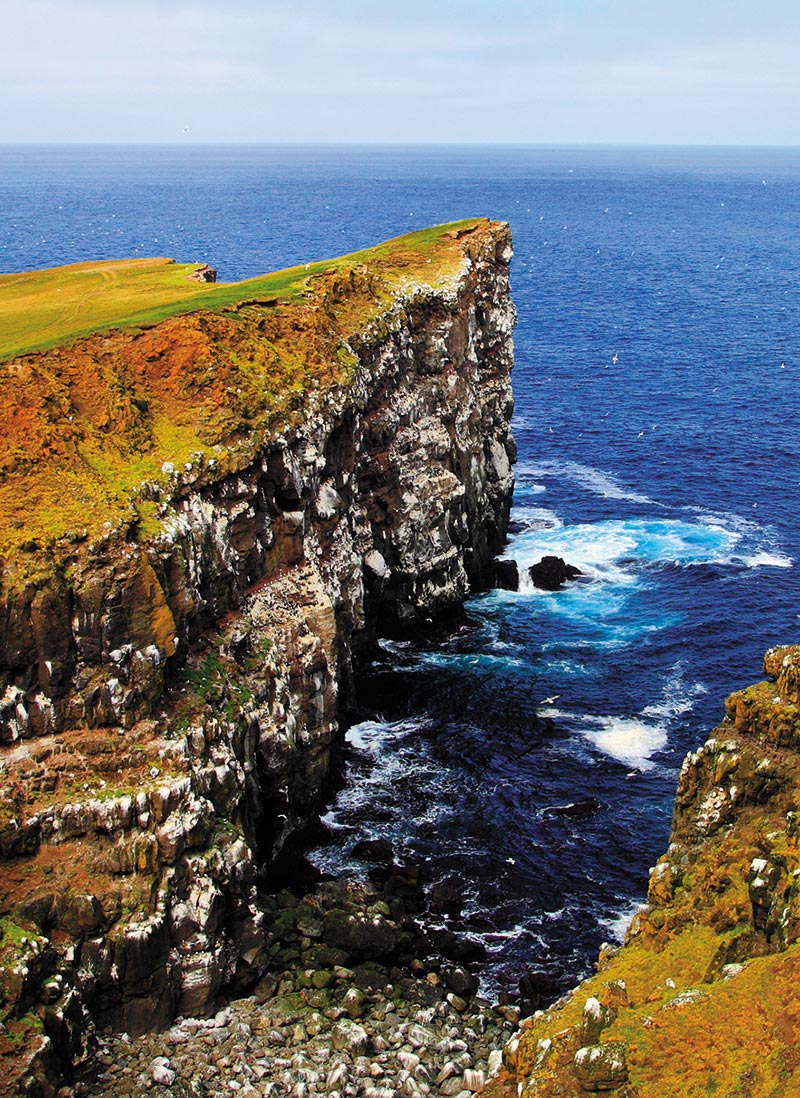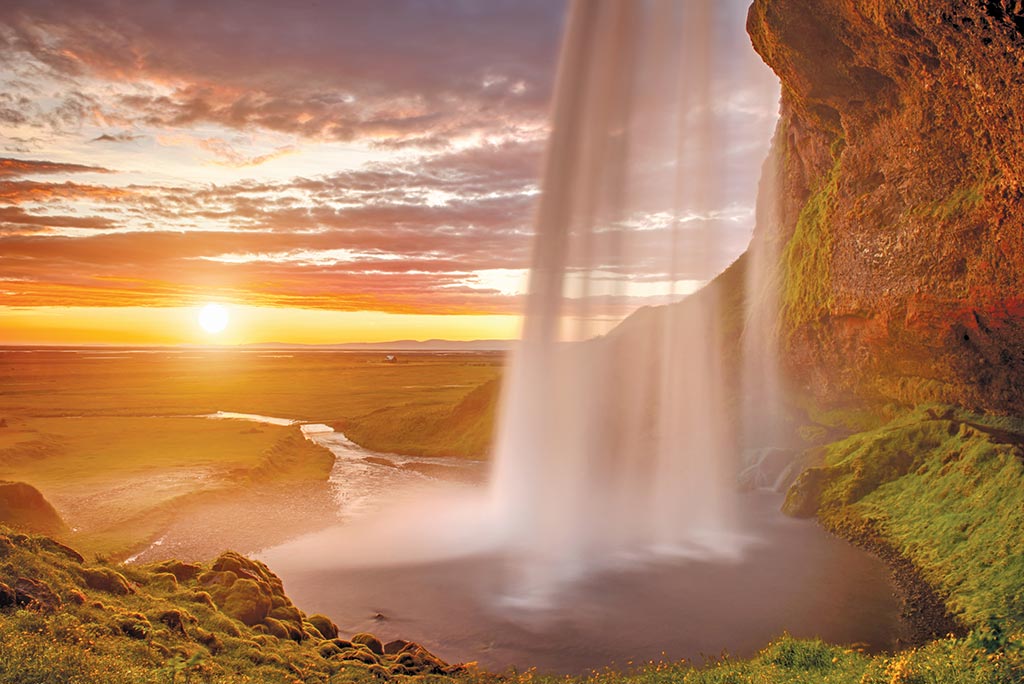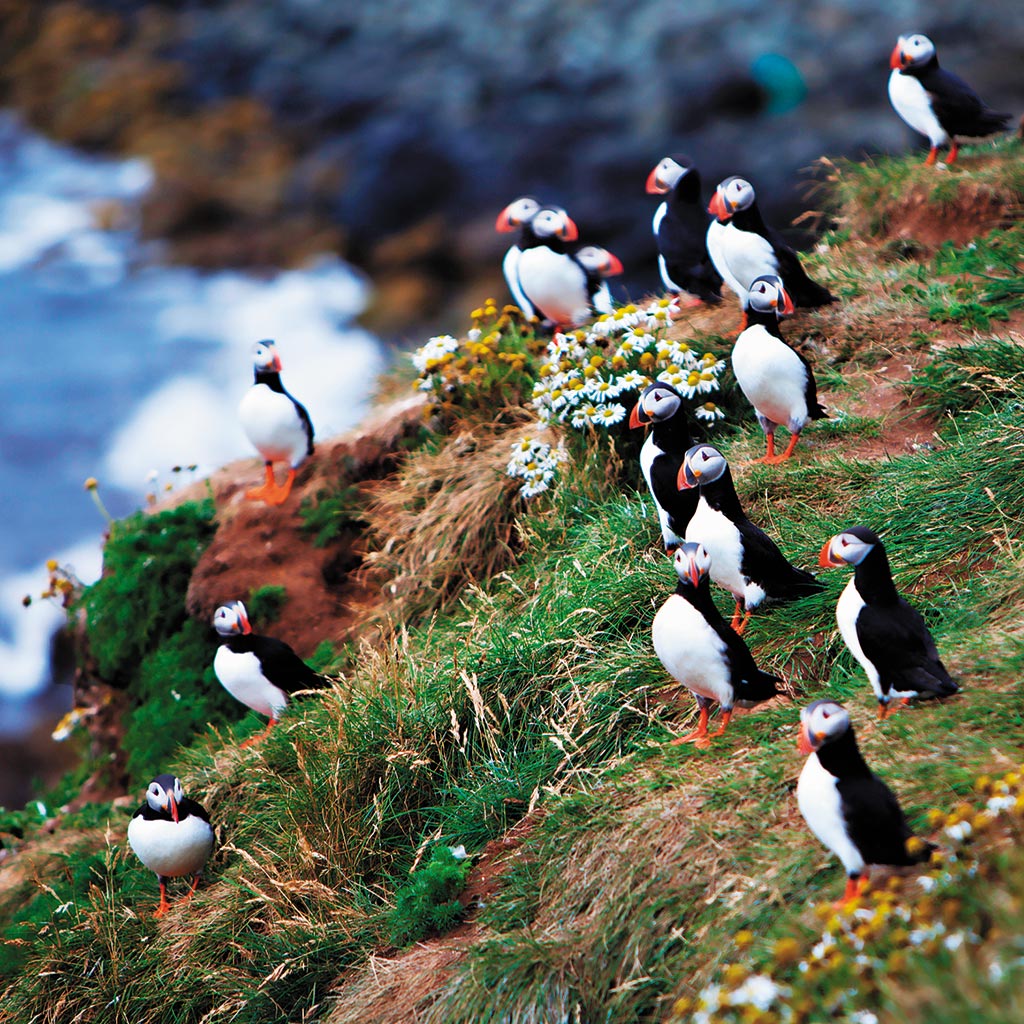Planning a Visit to Grímsey, Island of the Midnight Sun
About 40 kilometers off the coast of Iceland, Grímsey is a windswept and secluded island, about five square kilometers in area, that is as striking in beauty as it is difficult to reach.
Just 100 people reside in Grímsey, and those who remain come from hardy stock, battling arctic temperatures and isolation. Fishers brave the elements, including frost and storms and waves that could reach 15 meters high. It’s not an easy life.
Tourists come to explore the tiny island, bird-watch, and experience 24 hours of daylight in the height of the summer. Night does not reach Grímsey until late July, when the sun sets around midnight, only to rise a short time later. The island can be explored in one day.
If you’re on the island in late May or early June, Grímsey Days is an annual festival that takes place each year over three days. It focuses on old traditions from Grímsey, like collecting eggs from the cliffs, as well as enjoying seasonal local food, local music, and art. Visit www.grimsey.is for information on the exact date each year and the schedule of events.

Sights
Grímseyjarkirkja (Grímsey Church)
Grímseyjarkirkja was built in 1867 from driftwood that washed ashore, then renovated and enlarged in 1932. The exterior is white with a reddish brown roof. The highlight of the church for many tourists is the altar painting, a copy of a Leonardo Da Vinci painting, that was done by a local artist in 1878.
The history of the church is interesting, as one of Iceland’s early Catholic bishops, Jón Ögmundsson, consecrated a church on Grímsey in the 11th century, dedicated to St. Olaf, the patron saint of Norway. At the time, it was said that there should always be two priests at the church who should lead a daily mass (two a day on special occasions). However, today, a vicar from the mainland visits Grímsey to serve in the church approximately four times a year.
The Cliffs
The cliffs on the east side of the island are the highest, towering from 60 to 100 meters. In the old days, the basalt cliffs served as a major source of food as locals collected eggs along the rifts. It was a tenuous task; a rope would be lowered 60 meters down from the edge of the cliff while the individual collected eggs. There was a great risk that the rope would break or a large rock could break off, hitting and killing the climber. Today, the egg collection practice is safer and more modern, but the cliffs are a reminder of the past and the importance they served to feed the island. They’re also interesting formations and serve as a great backdrop when photographing birds.
The Lighthouse
Bright yellow and close to the cliff’s edge, Grímsey’s lighthouse is one of the most significant buildings on the island. It was built in 1937 and is situated on the southeast corner of the island. It was originally operated manually with a gas lamp that had to be turned on and off by hand. Today, the lighthouse is automatic and still plays an important role in directing boat traffic along the coast. Although the lighthouse is closed to the public, it’s a popular destination to take a photo, capturing birdlife and the cliffs in the background.

Crossing the Arctic Circle
Want to witness the midnight sun? That’s when the sun remains above the horizon for a full 24 hours during the summer solstice on June 21. There’s only one place you can experience this phenomenon in Iceland: where the Arctic Circle crosses the country’s northernmost point, on Grímsey. (If you’d prefer nearly 24 hours of darkness, there’s always polar night, on December 21.)
A small symbolic bridge to cross the Arctic Circle can be found at 66°33’N, north of the Grímsey’s airport terminal, next to Guesthouse Básar. Beside the bridge is a pole showing the distance to many well-known cities in the world, including London and New York.
Tourists who make the pilgrimage can buy evidence of the trip in the form of a diploma in the local gift store Gallerí Sól (Sólberg 611, tel. 354/467-3190), which is open Monday, Wednesday, and Friday during the summer months (June-Aug.). You can also reserve your diploma at Gallerí Sól by phone or email. Diplomas cost 1,000ISK. Those who come to Grímsey on a tour receive a diploma free of charge.

Bird-Watching
Grímsey is one of the best spots in North Iceland for bird-watchers interested in seabirds. The high season for birding is from April, when birds migrate to the island to nest, to August, when birds depart the island for warmer weather. Bird-watchers will have a chance to see arctic terns, black-legged kittiwakes, northern fulmars, razorbills, common guillemots, black guillemots, and murres. You can also see white wagtails, northern wheatears, and snow buntings.
The main attractions, however, are the adorable Atlantic puffins, as Grímsey is home to one of the largest colonies in Iceland. The birds, with their bright beaks and big personalities, are a delight to watch nesting and gliding along the cliffs. Please be aware of eggs and be careful not to disturb nesting areas.
Swimming
The Grímsey Island Thermal Pool (tel. 354/461-3155, 550ISK) is situated near the airport and is a quiet spot to take a dip. You likely won’t find crowds here, and the hours change often. For current hours you should inquire at the tourist information office or ask an employee of your guesthouse.
Getting to Grímsey by Air or Sea
By sea, Sæfari (tel. 354/458-8970) runs a ferry back and forth between Dalvík and Grímsey three days a week year-round. It takes about three hours each way, and the ferry can take 108 people. Book in advance in the summer months; tickets can be purchased at the tourist information office at Hof concert hall in Akureyri (tel. 354/450-1050). A round-trip fare is about 9,960ISK. The departure times from Dalvík are Monday, Wednesday, and Friday at 9am; the ferry returns from Grímsey at 4pm. Check the website for up-to-date departure information. Schedules can vary due to weather.
By air, the flight from Akureyri to Grímsey is one of the most beautiful 30-minute flights you will ever take. The jaw-dropping views of the landscape make the trip feel a tad too short. The landing is not for the faint of heart, as the small plane has to land on a small strip of grass on an island that looks like a rock in the middle of the ocean. During the summer (June-August), Air Iceland provides daily flights to Grímsey from Akureyri for 21,000ISK round-trip. For current departure timetables and precise ticket prices, check Air Iceland’s website. There are four flights a week from September to May.

